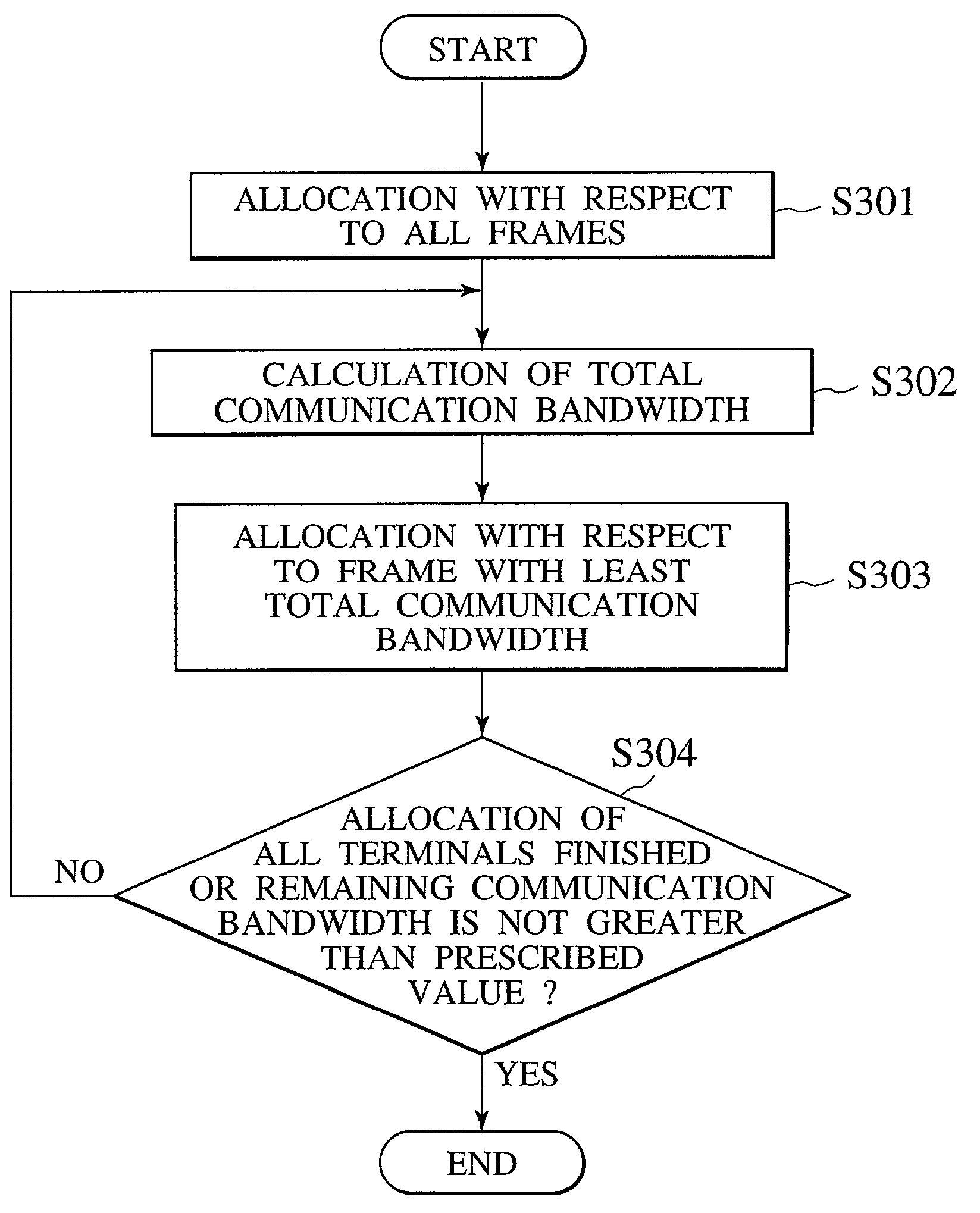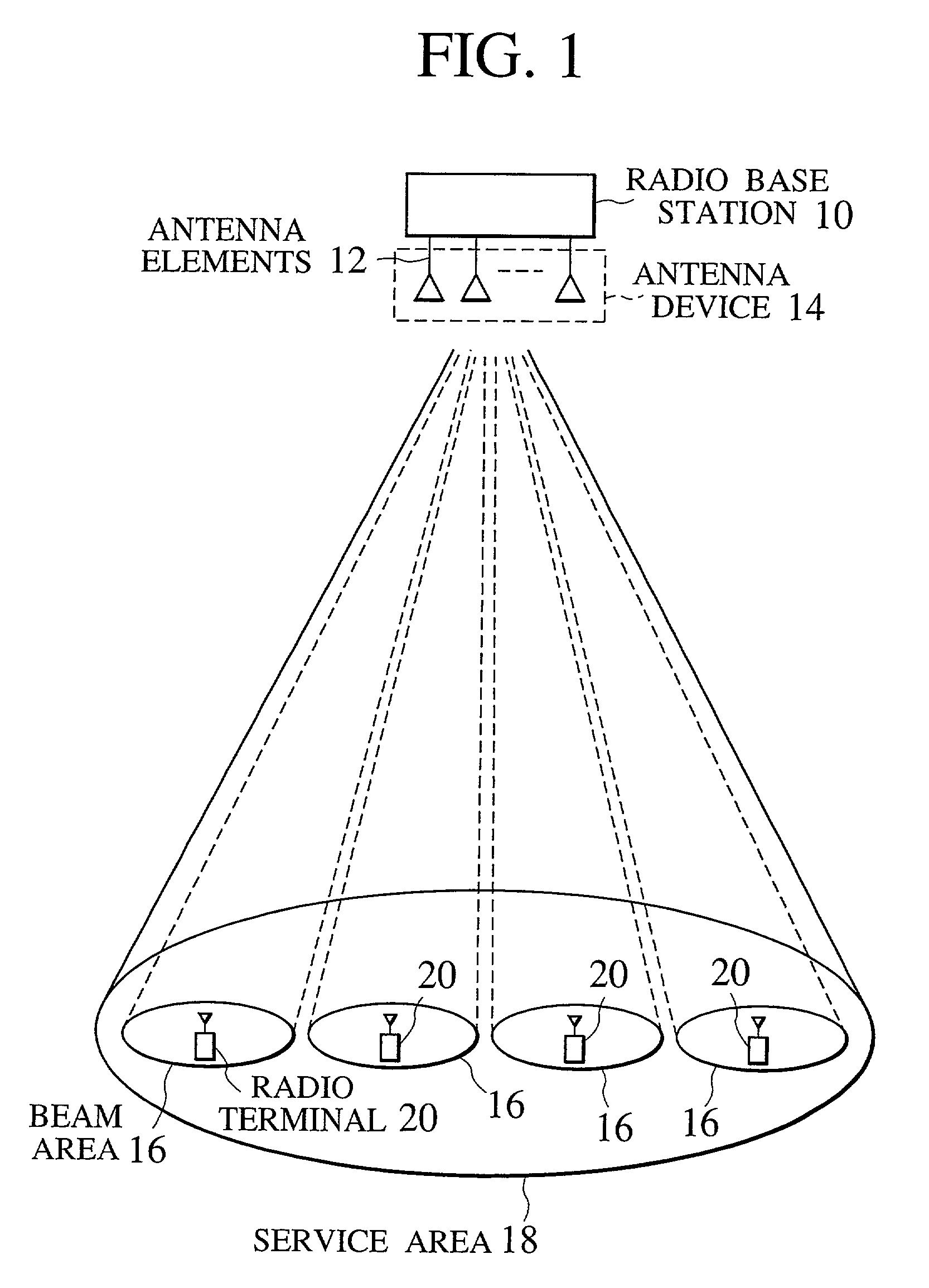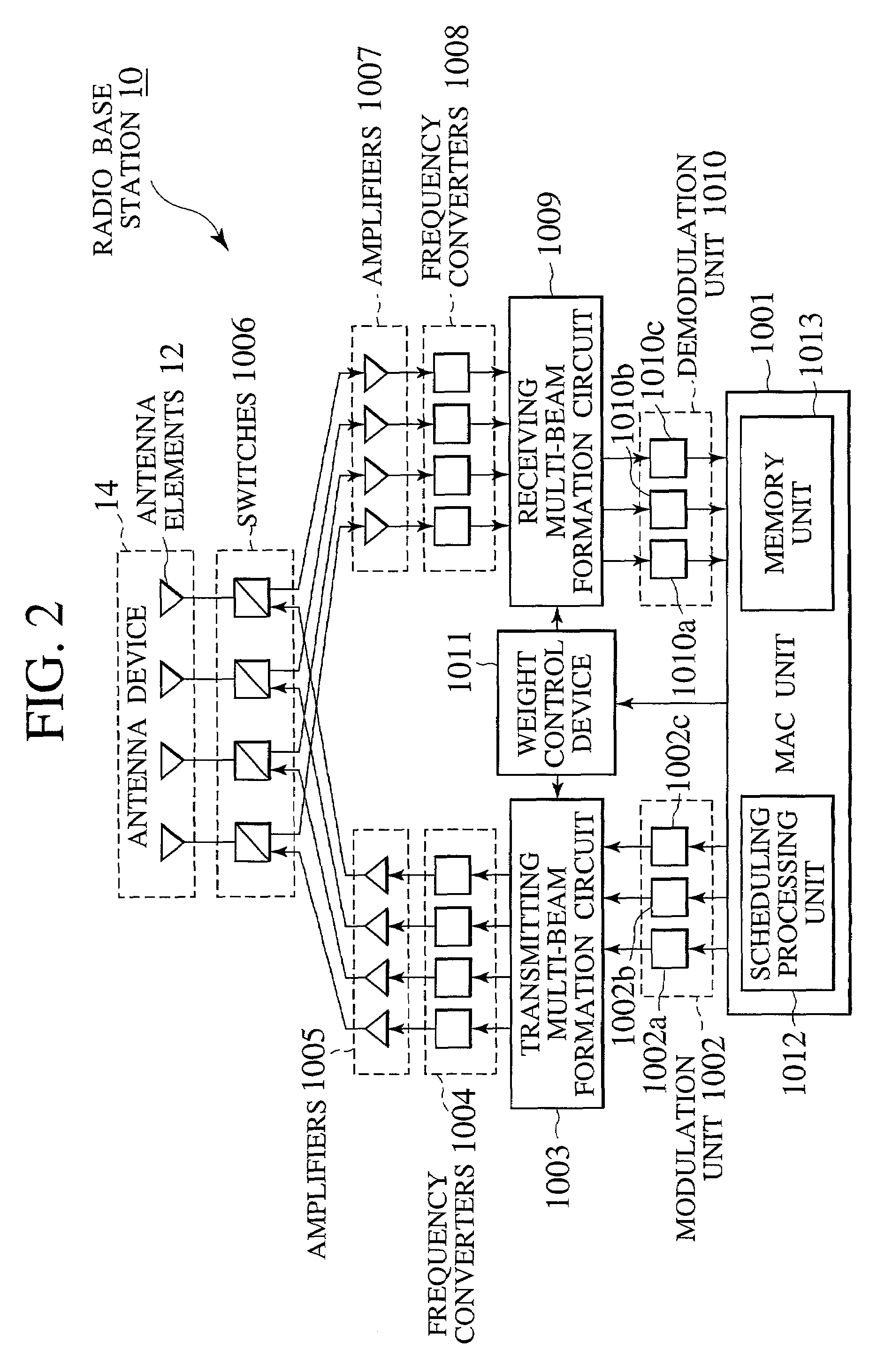Radio base station and frame configuration method using TDMA scheme and SDMA scheme
a technology of tdma scheme and frame configuration method, applied in the field of tdma scheme and sdma scheme for radio base stations and frame configuration methods, can solve the problem of not having a proposition for a specific frame configuration method suitabl
- Summary
- Abstract
- Description
- Claims
- Application Information
AI Technical Summary
Benefits of technology
Problems solved by technology
Method used
Image
Examples
Embodiment Construction
[0033]Referring now to FIG. 1 to FIGS. 20A and 20B, one embodiment of a radio base station and a frame configuration method according to the present invention will be described in detail. Note that the same or similar elements are given the same or similar reference numerals in these figures.
[0034]FIG. 1 shows a configuration of a radio communication system using a radio base station according to this embodiment. As shown in FIG. 1, the radio base station 10 of this embodiment has an antenna device 14 which is formed by a plurality of antenna elements 12 and capable of forming a plurality of beam patterns, a modulation unit (not shown) for modulating transmission data, and a demodulation unit (not shown) for demodulating received radio signals. Of course, it is also possible to use a configuration using a modulation / demodulation unit in which the modulation unit and the demodulation unit are integrated. Then, a plurality of beam areas 16 formed by the beam patterns of the radio base...
PUM
 Login to View More
Login to View More Abstract
Description
Claims
Application Information
 Login to View More
Login to View More - R&D
- Intellectual Property
- Life Sciences
- Materials
- Tech Scout
- Unparalleled Data Quality
- Higher Quality Content
- 60% Fewer Hallucinations
Browse by: Latest US Patents, China's latest patents, Technical Efficacy Thesaurus, Application Domain, Technology Topic, Popular Technical Reports.
© 2025 PatSnap. All rights reserved.Legal|Privacy policy|Modern Slavery Act Transparency Statement|Sitemap|About US| Contact US: help@patsnap.com



